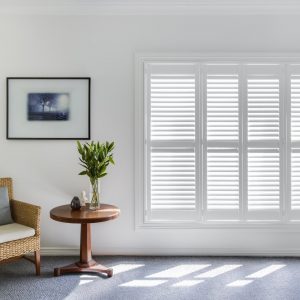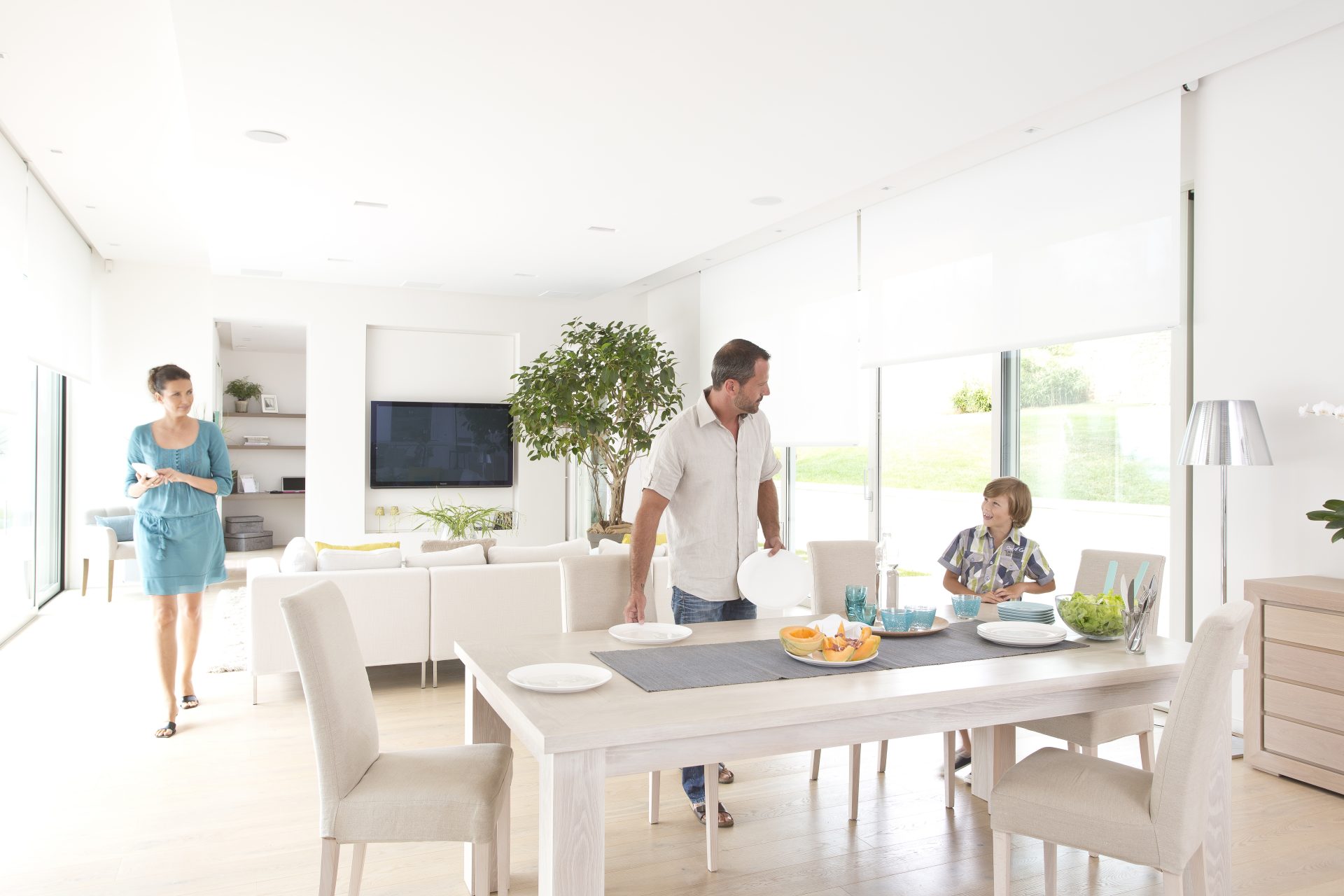Blinds and shutters can help reduce heating, cooling and lighting costs.
Getting the energy balance of a building right requires a holistic approach to building design to ensure products and systems work in harmony to maximise the benefits. Properly controlled solar shading can help to reduce heating and cooling loads and maximise daylight.
The problem
Most buildings have already been built. Old energy efficient buildings need high energy inputs to keep the temperature at an optimum. New highly insulated buildings may overheat unless they are actively cooled or better still, efficiently cross-ventilated during cooler parts of the day or night (‘free cooling’).
The solution
Using blinds and shutters in buildings can help to reduce heat gain in the summer, heat loss during winter and control light levels and harvest natural light.

The evidence
Building modelling conducted by the National Energy Foundation (UK) using EnergyPlus on a model office has highlighted that internal shading by a venetian blind could save 10 per cent of heating, ventilating and air-conditioning (HVAC) energy and a roller screen up to 23 per cent. If fitted externally, the savings in HVAC energy were 43 per cent and 47 per cent respectively.
The International Energy Agency (IEA), Technology Roadmap of energy efficient building envelopes, identifies dynamic solar control with exterior shading as a standard feature in new and existing buildings, and specifically refers to low-cost automated dynamic shading as one of the technologies where the highest potential of return on R&D investments lies (IEA, 2013).
Indeed, shading constitutes a self-financing climate control system in the way it improves insulation, manages solar control and maximise daylighting from increased glazing areas (European Solar-Shading Organisation ES-SO, 2014), as such it represents an investment paid back via the savings in energy use.
Fixed solar shading designed according to the sun’s peak seasonal angles can reduce solar gains in summer but still permit heat gains from the low angle sun in winter, contributing to reduce space cooling and heating loads. Internal shading with various types of blinds can add thermal resistance to the transparent envelope reducing its thermal energy transmittance i.e., unwanted heat loss and heat gain by transmission. Best-performing products include insulated systems and cellular shades containing multiple air layers in a honeycomb cross-section that are fitted into weather-stripped edge tracks. Although less effective, uninsulated shutters kept in a closed position also slightly reduce heat loss and help to form an insulating package.
During summer, external shading is particularly effective at preventing the solar radiation from reaching glazed surfaces; internal blinds can also contribute to reducing solar energy especially if a reflective finish is applied on the window-facing side. Shading also decreases the fraction of solar radiation in the short-wave infrared range (780-2500nm) that is absorbed and re-irradiated as thermal (long-wave infrared) radiation into the building and can significantly reduce the need for mechanical space cooling if coupled with cross-ventilation strategies.
During colder months, shading can provide night time insulation if fully closed overnight and maximise solar gains if left open during daylight hours. A control strategy should be put in place rather than delegate its adjustment to the occupants, who may forget or ignore the need to open or close blinds at appropriate times.
Winter or summer, automation plays a key role, with a range of sensors and control systems that continuously monitor the environment and adjust, as may be required, the position of awnings, blinds and shutters resulting in an optimised environment and lower energy costs.


